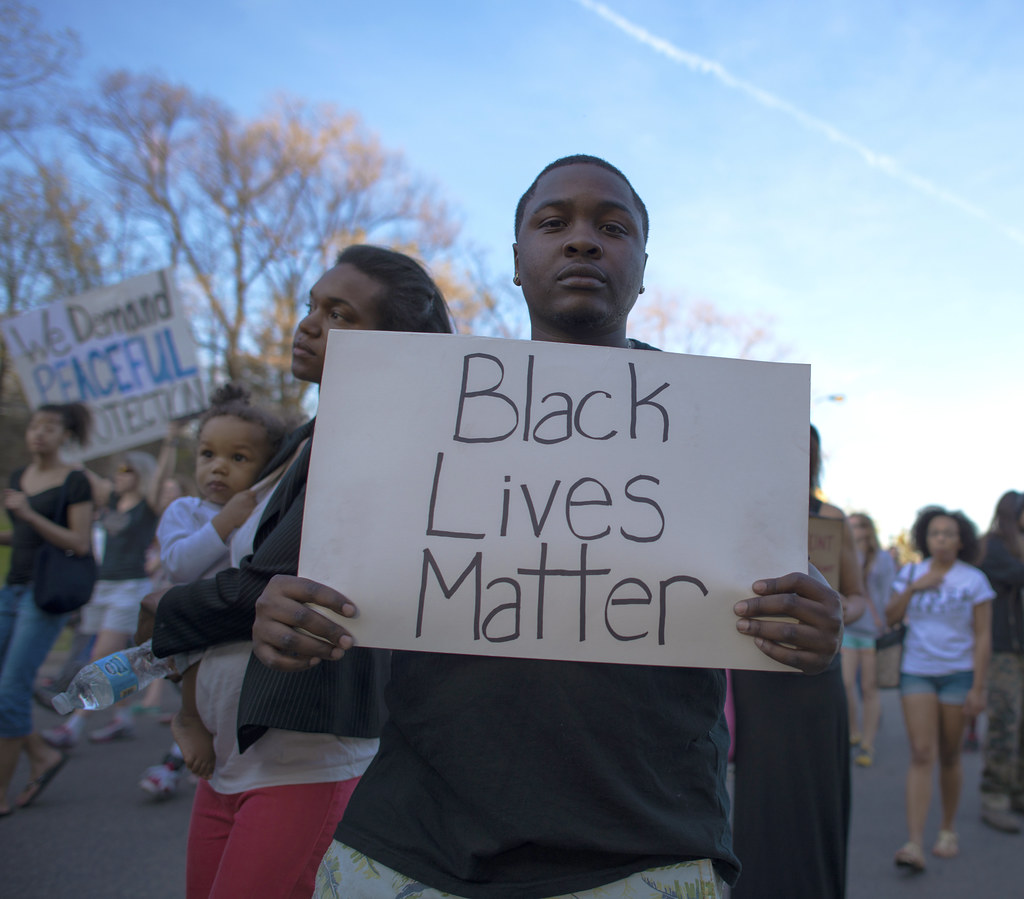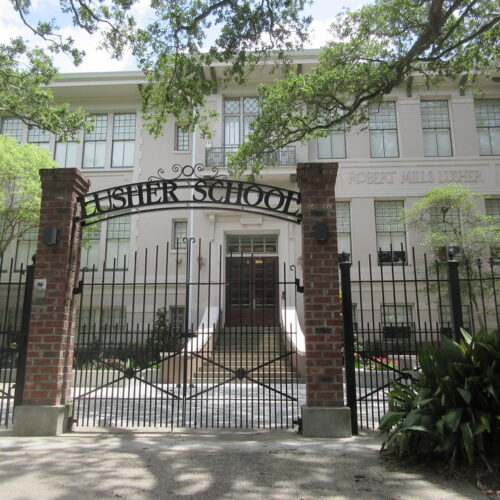
Photo of: Black Lives Matter protester
(Photo by: Fibonaci Blue)
Psychological studies have shown that even a 3-month-old baby prefers faces from their own racial group. This evolutionary defense, that allowed children to recognize their parents from danger, is one of the first examples of bias a human displays. By 30 months, a child is more likely to select a member of their own racial group during play time, and by the time a child is 4, they already associate whiteness with wealth and status. Children do indeed recognize racial differences from a very early age, but comments they make about race are usually met with discomfort from those around them instead of an open conversation. In fact, a survey given to parents in the United States showed that the majority believe children shouldn’t learn about race until age 5.
Over the summer, students at Lusher Charter School in New Orleans organized a protest with a goal of changing the name of the school and acknowledging the racism that occurs within the school. 3 of these students include Bahiy Watson and Jillian Terrie, recent graduates, and Nia Talbott, who is currently a senior. The school’s namesake, Robert Lusher, was a figure of the confederacy and a believer in white supremacy, but Jillian Terrie wanted people to know that a name change was not the only goal of the protest, “It’s about a name change, but it’s not about a name change. It’s about what led them to feel as though they can leave the name on this school.” Past students, parents, current students and residents have signed an online petition in support of this. On July 4th, more than 500 people gathered in the street to march from the elementary campus to the high school campus. They carried a sign stating that black students matter.

Photo of Lusher School arch
(Photo by: Infrogmation of New Orleans)
As part of this protest, an Instagram account under the username prideoflusher was started that allows students to report instances of racism that occur in the school. One student reported an experience where students were picked to abolish, slowly abolish, or argue against the abolishment of slavery in a mock debate. The anonymous student stated that while they initially did not see a huge issue with this, “It wasn’t until debate day when I saw [a] fellow black female student on the pro slavery team that I saw the problem. She completely broke down crying and ran out of class, she had to have her white friend read her research on her behalf, so she didn’t fail.”
In response to this ongoing discussion, the Orleans Parish School Board passed a resolution that works to allow schools to be renamed, fighting against the 2015 legislation that prevented schools from being renamed. While there have not been further developments on this issue yet, in a statement over the summer, OPSB acknowledged that Black Lives Matter.
Lusher students organized a second, virtual, protest to combat the lack of response that Lusher’s administration displayed after the summer protest. The organizers, the Black Student Union, asked students to change their avatar on Google Classroom to a drawing of a black man with words that state, “Black Students Matter. Day of Silence.” On September 25th students chose to remain silent in class to recognize how BIPOC (Black, Indigenous and people of color) students have felt for years.
OPSB schools, which are public, have a Black population that makes up 87% of total students. The typical student who attends a private school in New Orleans is white, according to the Education Research Alliance for New Orleans. Isidore Newman School in New Orleans released a statement in June discussing the racism that led to the death of George Floyd. In a letter addressed to the Newman community, head of school Dale Smith acknowledged the pain and fear members of the community who are Black continue to face. He urged families to engage in meaningful conversations about race. Similarly, Louise McGehee released a statement in June to alumnae. In this statement, an Instagram post that was made on Blackout Day, a day where only Black people were encouraged to post to social media in an effort to amplify their voices, was defended.
What is it teaching white students when even their school is unwilling to discuss topics that might be seen as uncomfortable? Creating a classroom culture where students and teachers discuss race and racial biases, and not allowing children to remain colorblind is a long-term solution to changing the racism this country faces, according to Dena Simmons, an educator and assistant director for Yale’s Center for Emotional Intelligence. The first step of this is for all schools to be willing to say that Black Lives Matter, no matter who they are appealing to or what neighborhood they are in.
 NOLAbeings
Multimedia artist Claire Bangser created NOLAbeings as a portrait-based story project that marries...
NOLAbeings
Multimedia artist Claire Bangser created NOLAbeings as a portrait-based story project that marries...
 Data corner: Adobe Suite (create a PDF, social media graphic, presentation, edit a photo and video
Data corner is where you go to work with analytics and top tech skills. It takes on everything from PERL and SQL to Canva and Sprout Social.
Data corner: Adobe Suite (create a PDF, social media graphic, presentation, edit a photo and video
Data corner is where you go to work with analytics and top tech skills. It takes on everything from PERL and SQL to Canva and Sprout Social.
